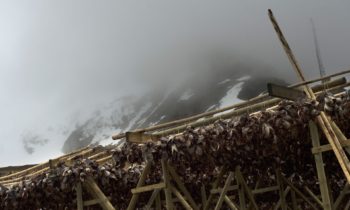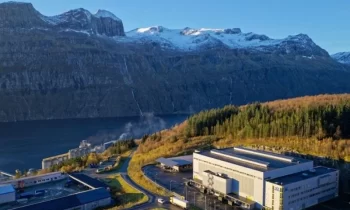 On November 30th, diplomats from the Department of State concluded 10 years of negotiations by finalizing a multilateral agreement to protect the central Arctic Ocean from overfishing, as sea ice in the region dwindles.
On November 30th, diplomats from the Department of State concluded 10 years of negotiations by finalizing a multilateral agreement to protect the central Arctic Ocean from overfishing, as sea ice in the region dwindles.
Canada, Norway, Russia, Denmark, Iceland, Japan, South Korea, China, and the European Union joined the United States in signing a 16-year moratorium on commercial fishing in a zone of 1.01 million square miles, an area the size of the Mediterranean Sea.
“Too often in the past, we’ve ended up overfishing areas before we even really knew what was there,” Steve Ganey, of the Pew Charitable Trusts, tells Pacific Standard. “This agreement dramatically shifts things. We’ve agreed to get the science first.”
The U.S. initiated these negotiations in 2007 at the urging of Senator Ted Stevens (R-Alaska), who advocated policies for sustainable fisheries. In 2008, the U.S. Senate passed a joint resolution directing the Department of State to seek an agreement that would extend existing U.S. fisheries policies for the Arctic to international waters.
The Senate resolution recognized that global warming could shift fish stocks toward the central Arctic Ocean, and that dwindling sea ice would open the door to exploitation of the region. It also recognized that large-scale commercial fishing could pose a threat to indigenous Arctic communities, and that any future management strategies should depend firmly on the latest science.
In 2015, the five countries directly bordering the Arctic Ocean—Canada, Norway, Russia, Denmark (via Greenland), and the U.S.—reached a preliminary agreement, then invited other major fishing nations to the table. The talks dragged on as negotiators mediated regional tensions, including a Russian claim to the seafloor around the North Pole.
“This has spanned the Bush, Obama, and Trump administrations, and the U.S. diplomats never wavered in their negotiations with the other countries,” Ganey says, adding that the Arctic and Antarctic offer promising instances where international cooperation has worked.
The new agreement is a good first step toward protecting the central Arctic, but much remains to be done, says Alaska-based Arctic researcher Henry Huntington of the Ocean Conservancy.*
The Arctic is warming twice as fast as the global average. In recent years, up to 40 percent of the region that was previously covered with sea ice has been ice-free during summers. The biological consequences of the meltdown are far from clear.
“The big question is: How do ecosystems respond to that change?” Huntington says. Scientists predict the region will experience a sort of seasonal schizophrenia, with subarctic conditions in the summer and Arctic conditions in the cold, dark winter.
Several nations, including South Korea and Norway, are already planning to study fisheries in the region, and Huntington says it would help if other research projects focused on sea ice decide also to include fisheries research as part of their science missions. Such steps would help build the framework for long-term sustainable governance of the Arctic, he says.
“What’s important about [the fishing moratorium] is that it acknowledges that this is a very unique area,” Jon Burgwald, of Greenpeace Nordic, tells Pacific Standard,praising the pact’s preemptive approach. “We’ve acted before we see problems in this area, before we started seeing commercial fishing.”
(psmag)



